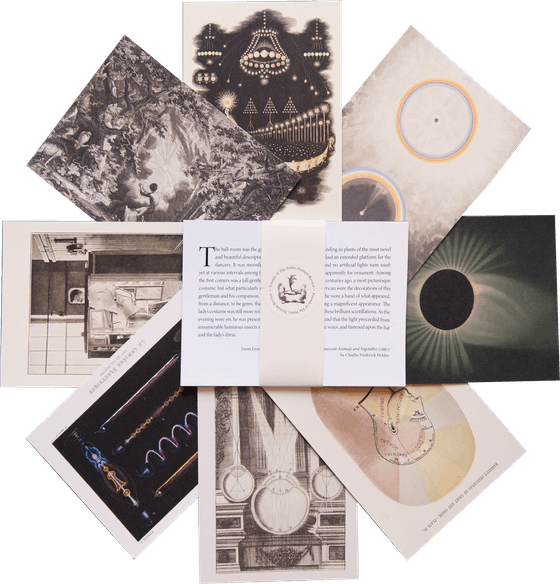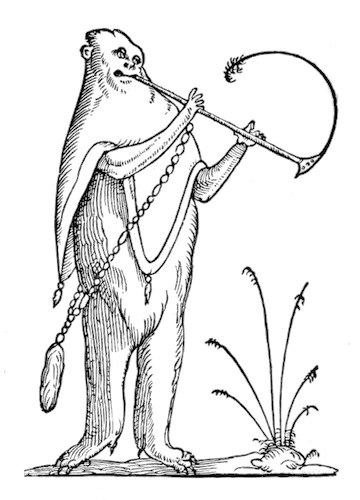
EssaysCulture & History

Liberal Visions and Boring Machines: The Early History of the Channel Tunnel
More than a century before the Eurostar and LeShuttle, a group of engineers and statesmen dreamed (and fretted) about connecting Britain to France with an underwater tunnel. Peter Keeling drills into the history of this submarine link, and finds a still-relevant story about the cosmopolitan hopes and isolationist panic surrounding liberal internationalism. more

The Reluctant Levitator: Teresa of Avila’s Humble Raptures
Levitation was the last thing Teresa of Avila wanted. It drew the wrong kind of attention and embarrassed her in public. She tried to remain grounded, clinging to furniture when the weightlessness set in, and then suddenly, it stopped for good. Carlos Eire reads Teresa's autobiographic Vida and finds the 16th-century saint complaining to God about the aethrobatic miracles that he forced her to endure. more

The Silent Treatment: Solitary Confinement’s Unlikely Origins
Characterised today by the noise of banging, buzzers, and the cries of inmates, solitary confinement was originally developed from Quaker ideas about the redemptive power of silence, envisioned as a humane alternative to the punitive violence of late-18th century jails. Revisiting Pennsylvania’s Eastern State Penitentiary, Jane Brox discovers the spiritual origins and reformist ambitions of solitary’s early advocates, and sees their supposedly progressive desires come to ruin by the 20th century. more

Liquid Bewitchment: Gin Drinking in England, 1700–1850
The introduction of gin to England was a delirious and deleterious affair, as tipplers reported a range of effects: loss of reason, frenzy, madness, joy, and death. With the help of prints by George Cruikshank, William Hogarth, and others, James Brown enters the architecture of intoxication — dram shops, gin halls, barbershops — exploring the spaces that catered to pleasure or evil, depending who you asked. more

Wonder and Pleasure in the Oude Doolhof of Amsterdam
For almost 250 years, a mysterious pleasure park sat on the banks of Amsterdam's canals. Angela Vanhaelen leads us on a tour of the bawdy fountains, disorienting maze, and mechanical androids in the Oude Doolhof — an attraction that mingled pagan, protestant, and imperial desires. more

The Black Dandy of Buenos Aires: Racial Fictions and the Search for Raúl Grigera
A mysterious staple of Buenos Aires nightlife in the 1910s and 20s, Raúl Grigera was an audacious Afro-Argentine dandy, an eccentric bohemian icon, a man who called himself el murciélago (the bat). Paulina L. Alberto examines the racial stories told by photographs, comic strips, and newspaper articles about a person many knew only as “el negro Raúl”, searching for the life behind the legend. more

Marvellous Moderns: The Brothers Perrault
Charles Perrault is celebrated as the collector of some of the world’s best-known fairy tales. But his brothers were just as remarkable: Claude, an architect of the Louvre, and Pierre, who discovered the hydrological cycle. As Hugh Aldersey-Williams explores, all three were able to use positions within the orbit of the Sun King to advance their modern ideas about the world. more

The City That Fell Off a Cliff
Beneath the waves, off the Suffolk Coast, lies a city taken by the sea through centuries of erosion. Matthew Green revisits Dunwich, a once lively port transfigured into a symbol of loss, both eerie and profound, for generations of artists, poets, and historians drawn to its ruinous shores. more

In Search of True Color: Sergei Prokudin-Gorsky’s Flawed Images
Archived amid Prokudin-Gorsky’s vast photographic survey of the Russian Empire, we find images shot through with starshatter cracks, blebbed with mildew, and blurred by motion. Within such moments of unmaking, Erica X Eisen uncovers the overlapping forces at play behind these pioneering efforts in colour photography. more

Colonizing the Cosmos: Astor’s Electrical Future
During America’s Gilded Age, the future seemed to pulse with electrical possibility. Iwan Rhys Morus follows the interplanetary safari that is John Jacob Astor’s A Journey in Other Worlds, a high-voltage scientific romance in which visions of imperialism haunt a supposedly “perfect” future. more

Jumbo’s Ghost: Elephants and Machines in Motion
On September 15, 1885, twenty-five years after his capture in Sudan, Jumbo the elephant tragically died when struck by a freight train. Ross Bullen takes us on a spectral journey through other collisions between elephant and machine — in adventure novels, abandoned roadside hotels, and psychic science — revealing latent anxieties at the century’s turn. more

Out on the Town: Magnus Hirschfeld and Berlin’s Third Sex
Years before the Weimar Republic’s well-chronicled freedoms, the 1904 non-fiction study Berlin’s Third Sex depicted an astonishingly diverse subculture of sexual outlaws in the German capital. James J. Conway introduces a foundational text of queer identity that finds Magnus Hirschfeld — the “Einstein of Sex” — deploying both sentiment and science to move hearts and minds among a broad readership. more

Handy Mnemonics: The Five-Fingered Memory Machine
Before humans stored memories as zeroes and ones, we turned to digital devices of another kind — preserving knowledge on the surface of fingers and palms. Kensy Cooperrider leads us through a millennium of “hand mnemonics” and the variety of techniques practised by Buddhist monks, Latin linguists, and Renaissance musicians for remembering what might otherwise elude the mind. more

“Pajamas from Spirit Land”: Searching for William James
After the passing of William James — philosopher, early psychologist, and investigator of psychic phenomena — mediums across the US began receiving messages from the late Harvard professor. Channelling these fragmentary voices, Alicia Puglionesi considers the relationship between communication, reputation, and survival after death. more

Little Switzerlands: Alpine Kitsch in England
Far from the treacherous peaks and ravines of Switzerland, Alpine cottages arose, unexpectedly, amid the hillocks and modest streams of 19th-century England. Seán Williams recovers the peculiar fad for “Little Switzerlands”, where the Romantic sublime meets countryside kitsch. more

William Wells Brown, Wildcat Banker
A cottage industry, yes, but a barbershop bank? Ross Bullen plots how a story told by William Wells Brown — novelist, historian, playwright, physician, and escaped slave — circulated, first through his own works, and then abroad, as a parable of American banking gone bad. more

Laughter in the Time of Cholera
Political instability, popular unrest, and an impending pandemic? Welcome to France in the early 1830s. Vlad Solomon explores what made Parisians laugh in a moment of crisis through the prism of a vaudeville play. more

The Dust That Measures All Our Time
From the mythical Sandman, who participates in dream and vision, to an irritating grain lodged in the beachgoer’s eye, sand harbours unappreciated power, however mundane. Steven Connor celebrates this “most untrustworthy” type of matter. more

Mermaids and Tritons in the Age of Reason
For much of the eighteenth century, Western intellectuals chased after tritons and mermaids. Vaughn Scribner follows the hunt, revealing how humanity’s supposed aquatic ancestors became wondrous screens on which to project theories of geographical, racial, and taxonomical difference. more

Circassian Beauty in the American Sideshow
Among the “human curiosities” in P. T. Barnum’s American Museum was a supposed escapee from an Ottoman harem, a figure marketed as both the pinnacle of white beauty and an exoticised other. Betsy Golden Kellem investigates the complex of racial and cultural stereotypes that made the Circassian beauty such a sideshow spectacle. more

Picturing Scent: The Tale of a Beached Whale
What can visual art teach us about scent, stench, and the mysterious substance known as ambergris? Lizzie Marx follows a “whale-trail” across history to discover the olfactory paradoxes of the Dutch Golden Age. more

Reading Like a Roman: Vergilius Vaticanus and the Puzzle of Ancient Book Culture
How did Virgil’s words survive into the present? And how were they once read, during his own life and the succeeding centuries? Alex Tadel explores Graeco-Roman reading culture through one of its best-preserved and most lavishly-illustrated artefacts. more

Photographing the Tulsa Massacre of 1921
On the evening of May 31, 1921, several thousand white citizens and authorities began to violently attack the prosperous Black community of Greenwood in Tulsa, Oklahoma. Karlos K. Hill investigates the disturbing photographic legacy of this massacre and the resilience of Black Wall Street’s residents. more

The Art of Making Debts: Accounting for an Obsession in 19th-Century France
Being in debt was once an artful promenade — the process of eluding creditors through disguise and deceit. Erika Vause explores a forgotten financial history: the pervasive humor that once accompanied the literature and visual culture of debt. more


